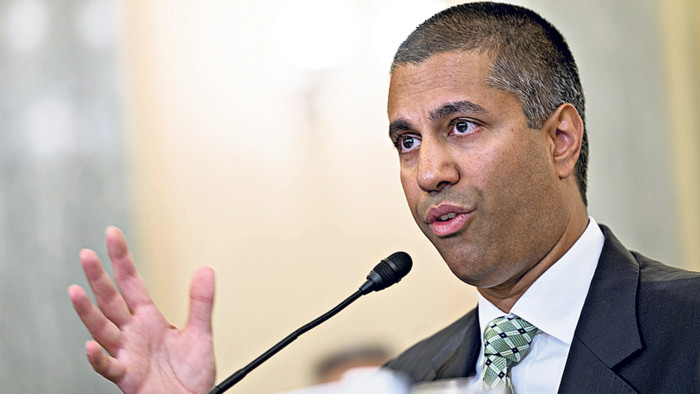Global 5G regulators pit light touch against heavy hand

Roula Khalaf, Editor of the FT, selects her favourite stories in this weekly newsletter.
Telecoms is often dubbed the “fourth utility” behind electricity, water and gas. Consumers and businesses are now utterly dependent on receiving a decent internet connection, whether by fixed or mobile line, which has led some countries to make access a legal right.
Mobile phone networks are, however, a world apart from the old power lines and water pipes that keep consumers connected to those essential services. The equipment installed on telecoms masts has to be upgraded regularly to meet our smartphone and data habits, with each generation — the ‘G’ in 4G or 5G — incrementally improved over the course of a technology cycle.
The move from 2G to the early stages of 5G has taken less than 20 years, which has created a problem for regulators and governments concerned that their country could be “losing the race” to the latest technology and the economic fruits any upgrades could bring.
Nowhere has that been more evident than in Europe. The European Commission forged attempts to deregulate the sector to create a digital single market in 2016 when it identified a €155bn funding shortfall in the €500bn it estimated would be needed to upgrade the continent’s networks. It proposed a series of measures designed to entice carriers to bankroll new full fibre and 5G networks.
The digital single market was intended to free up telecoms companies to invest in new networks across the continent, thus creating a unified communications infrastructure while removing barriers such as the need for larger multinational players like Vodafone to deal with dozens, if not hundreds, of national regulators.
A “5G Action Plan” was unveiled to align policies across the countries that form the economic bloc, with proposals to extend licence cycles and to harmonise the spectrum — the airwaves that carry wireless signals — so that large companies could invest with more certainty across fragmented markets.
The plan was designed to ensure Europe was not left behind as operators in the US and some Asian countries, notably China and South Korea, had already started to invest in 5G. Yet the European Parliament amended the proposals to include new measures to tackle “oligopolies” in the telecoms market, to regulate international calls and to scale back some of the deregulatory measures. Barclays analysts warned that “carrots” had been replaced with “sticks” while the industry reacted by calling on ministers to “save the 5G Project”.
A letter signed by the heads of Deutsche Telekom, Orange, BT and Telefónica in 2017 said: “Other regions of the world are out-investing Europe 2 to 1 in digital networks. This should be a reason for alarm and action, especially in the context of global competition and fast-paced technological change.”
Two years of squabbling over the Electronic Communications Code was finally resolved in June and contrasted with other countries where regulators have taken a more hands-off approach.
Ajit Pai, the head of the US Federal Communications Commission, has taken concrete steps to change laws dating back to the 1930s that could slow investment in 5G networks.
Mr Pai was adamant in an interview with the Financial Times this year that a “light touch” was needed to encourage investment in faster 5G networks.
In July, T-Mobile, the US mobile network, signed a $3.5bn deal with Nokia to supply equipment for a nationwide 5G rollout, the largest and most significant contract to date for the new technology.
Robert M. McDowell, partner at law firm Cooley and former commissioner of the FCC, argues that the European approach has historically meant lower return on investment for telecoms companies. This, he says, allowed the US sector to leapfrog Europe and Asia due to a lower regulatory burden.
“Europe tried to create an industrial policy for the wireless sector — even mandating technical protocols and standards instead of allowing engineers and markets to find the right solutions for consumers,” he says.
Yet regulation comes in different forms. Outside the realms of communications policy, the approach taken by the US and Australia to freeze out Chinese suppliers Huawei and ZTE from 5G upgrades due to security concerns could have a significant impact on investment if telecoms companies have fewer suppliers to choose from.
A balanced regulatory environment looks to have been key to the speed at which telecoms companies roll out 5G. Yet Europe’s approach to more tightly constrain the largest companies may pay off longer term if the strict rules give smaller players the confidence to invest and compete in the 5G era.
Mr McDowell thinks the jury is still out. “Asia, Europe and the US are in a fierce battle to set the standards for the next generation of the mobile internet . . . Time will tell if the American hands-off policies will win out over the more regulated approach overseas.”

Comments